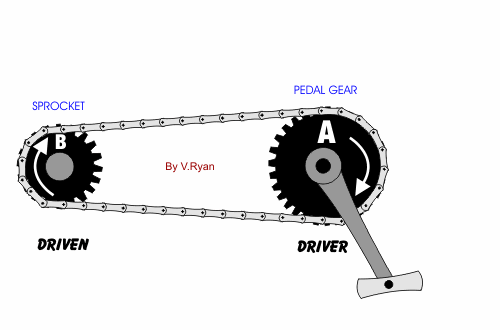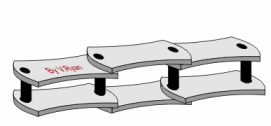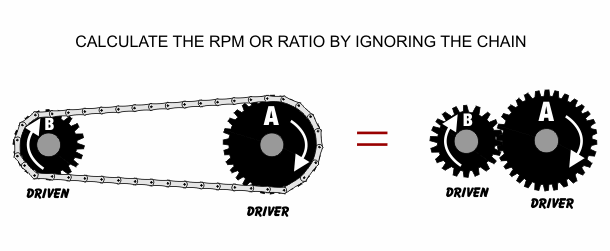| CLICK HERE FOR INDEX PAGE | |
| GEAR WHEELS (SPROCKETS) AND CHAINS | |
| V. Ryan © 2004 | |
|
Everyone has seen a bicycle or used one and noticed that it is driven by a large driver gear wheel with pedals attached. Smaller gears at the back are driven round, in turn driving round the back wheel. As the back wheel turns the bicycle moves forwards. Gears driven by chains are used in machinery, motorcycles, in car engines and have many more applications. |
|
|
|
|
|
|
A chain is made up of a series of links with the links held together with steel pins. This arrange makes a chain a strong, long lasting way of transmitting rotary motion from one gear wheel to another. |
|
Chain drive has one main advantage over a traditional gear train. Only two gear wheels and a chain are needed to transmit rotary motion over a distance. With a traditional gear train, many gears must be arranged meshing with each other in order to transmit motion. |
|
|
WORKING OUT GEAR RATIO AND RPM |
|
|
When working out gear / velocity ratio and the rpm of chain driven gears it must be remembered that the chain is ignored. This means the you simply find out the teeth per gear wheel and the rpm and use the same method of calculating as you would with a normal, meshing gear system (see gear work sheets) |
|
|
|
|
|
QUESTIONS: 1. Draw a mechanism that relies on the use of a gear system including a chain. 2. What are the advantages of using a chain driven mechanism? |
|
|
|
|


